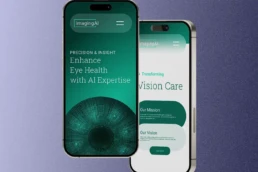- Home
- Collective
- Best Practices to Consider Post-Brand Design Refresh
Best Practices to Consider Post-Brand Design Refresh

A brand refresh is a pivotal moment for any company, representing an evolution in its mission, vision, or values. While the creative and strategic elements of the refresh are crucial, the steps taken after the reveal can significantly impact its success. Connecting with your audience on changes to their beloved brand is a huge factor that showcases brand authenticity. Achieving a transparent and effective goal post-refresh can help solidify your brand to new heights.
Launch an Impactful Campaign
The unveiling of your refreshed brand should be as dynamic as the brand itself. Launching a marketing campaign that leverages multiple channels—social media, email, digital ads, and PR—to showcase the new brand identity can align your audience and growing consumers of new changes. This campaign should highlight the changes and the reasons behind them, emphasizing how they reflect the brand’s commitment to its customers. Creative visuals, engaging content, and a cohesive message are crucial to capture attention and make a memorable impact.
Additionally, depending on how large your overhaul is, in-person events can also offer an experiential element to your brand. In-person pop-up events can help engage new consumers, but also create a new way for your audience to learn more about your brand while simultaneously engaging with your products/services.
Align with Audience Feedback
Feedback is a goldmine of insights, and aligning your post-refresh strategies based on audience reactions is crucial. Monitor social media, customer feedback, and engagement metrics closely, as they can be a tell-tale indicator of how your users are responding to your brand’s changes. Even if a refresh is subtle, such as a font change in a logo, your audience will be vocal about it, therefore, engaging with your users can help gauge their preferences. Additionally, be agile and ready to tweak elements of your brand presentation in response to this feedback. This shows your audience that their input is valued and that your brand evolves in response to their needs and expectations.
Be Transparent and Inclusive
Transparency is key to gaining and maintaining trust during a brand transition. Share the journey of your brand refresh with your audience. Use behind-the-scenes content, blogs, and videos to tell the story of what has changed and why. Involve key stakeholders in this narrative and consider spotlighting team members who played significant roles in the refresh process. This not only humanizes your brand but also helps your audience feel like they are part of the evolution.
Leverage Storytelling
Every brand has a story, and a refresh can often add a compelling chapter to that narrative. Use storytelling to strengthen your brand’s message. This approach can help clarify the brand’s new direction and reinforce the emotional connection with your audience. Stories can be conveyed through videos, social media posts, and even interactive content on your website. Often, dissecting the reasoning behind your refresh can humanize your brand by sharing why the decision for the refresh occurred.
Monitor and Adapt
The period following a brand refresh is critical for monitoring the impact of your changes. Use analytics to track engagement, sentiment, and the overall reception of the new brand. Be prepared to adapt your strategies based on what the data tells you. Continuous improvement will help refine your brand’s approach and ensure that it remains relevant and appealing to your target audience.
Educate Your Internal Team
Showcasing your refresh to your audience is a core step but ensuring that every internal team member understands and embodies the new brand identity is just as essential. Conduct training sessions, workshops, and regular meetings to educate your team about the new elements of the brand and how they should communicate these changes both internally and externally. This can also be achieved by sharing brand activation materials such as brand guidelines and design usage standards.
A brand refresh is an opportunity to reinvigorate your business, align more closely with your goals and market, and engage deeply with your customers.
Next Item
User and Experiences on the Web

Maximizing Brand Impact with Lead Generation
Now more than ever, brand authenticity has become a core factor in audience engagement and interactions. Branding is all about building relationships with potential customers which in turn can help ignite conversions. Lead generation plays a…
Design Systems and AI Technology
As artificial intelligence (AI) becomes increasingly integrated into our daily lives, a brand-focused design language is important. A well-crafted design language enhances user interaction and ensures that AI technologies are accessible,…
Retaining Your Audience After Acquisition with Design Languages
Handling branding and design systems after acquisition without confusing consumers is a delicate balance. The balancing act occurs when finding the middle between refreshing the acquired company’s branding system and design language. The core of it…


